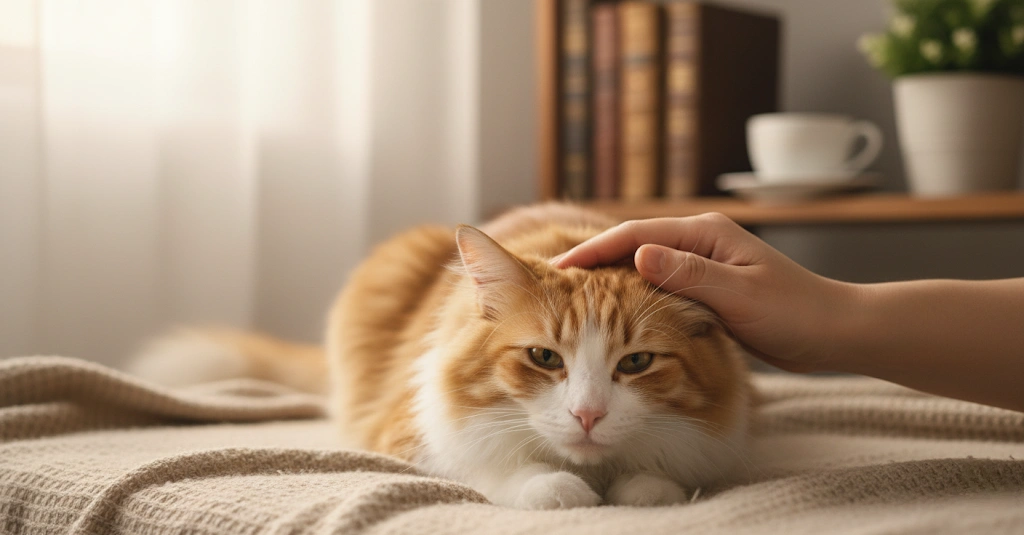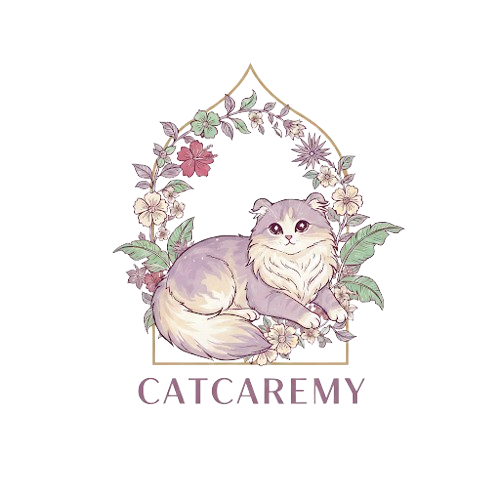
Cat diarrhea can be scary for owners. It often starts fast and may last for more than one day. Some cases are mild and stop with simple care. But some cases mean your cat has a serious health problem.
As a cat owner in Malaysia, you need to know when you can handle diarrhea at home and when you must see a vet.
This 2025 guide shows the main causes of cat diarrhea, treatment options, home remedies, prevention steps, local cost estimates in Malaysia, and vet-backed advice.
Common Causes of Cat Diarrhea
Cat diarrhea is not a disease. It is a sign of another problem. These are the main causes:
| Cause | Typical Symptoms | Risk Level | Action |
|---|---|---|---|
| Sudden Diet Change | Stool turns soft fast, sometimes with vomiting | Low–Moderate | Change food slowly over 7–10 days |
| Food Allergies & Intolerances | Soft stool often, itchy skin, vomiting, ear issues | Moderate | Try an elimination diet with vet help |
| Parasites | Worms in stool, bloating, weight loss, gas | Moderate–High | Bring stool to vet for test and deworming |
| Infections (Bacterial/Viral) | Fever, weak body, bloody stool, hard vomiting | High | Go to vet fast — emergency |
| Stress or Anxiety | Soft stool for a short time, hiding, no appetite | Low–Moderate | Lower stress, try calming tools |
| Chronic Disease (IBD, CKD, Hyperthyroidism) | Ongoing diarrhea, weight loss, poor coat, thirst | High | Needs tests and long-term vet care |
Stool Color and What It Means
Cat diarrhea is not a disease. It is a sign of another problem. These are the main causes:
Brown: This is a normal, healthy color. It shows the cat’s stomach and gut are working well.
Green: The food moved through the gut too fast. This happens with diarrhea. It can also be from eating grass or green food dye.
Yellow or Orange: This color may mean a liver or bile problem. The liver makes bile to help digest food, and bile gives stool its brown color. Some foods also cause this color.
Black and Tarry: This is serious. It means there is bleeding in the upper gut (stomach or small intestine). The blood is digested, so it looks black and sticky. Go to the vet right away. This is an emergency.
Red Streaks or Spots: There is fresh blood in the stool. This means bleeding in the lower gut (large intestine or rectum). This can be from parasites or constipation. You need to see a vet.
Gray or Clay-Like: This pale stool suggests a problem with the pancreas or bile ducts. The body is not making or using enough bile.
When to See a Vet for Cat Diarrhea
Call your vet right away if your cat has:
- Diarrhea that lasts more than 2 days
- Blood or mucus in the stool
- Very weak body or nonstop vomiting
- Fast weight loss
- Signs of dehydration (sunken eyes, dry gums, or skin on the neck that stays up after you pinch it)
At-Home Remedies for Mild Cat Diarrhea
If your cat seems normal otherwise and has only mild diarrhea, you can try these home remedies:
- Fast your cat for 12 hours to give its digestive system a break. Always leave fresh water out during this time.
- Reintroduce food slowly. After the fast, offer a bland diet. A small amount of plain boiled chicken and rice, or a single tablespoon of plain canned pumpkin (not pie filling), can help firm up the stool.
- Keep them hydrated. Ensure your cat has constant access to fresh water. You can try a pet fountain to encourage them to drink more.
- Add vet-approved probiotics. These can help restore healthy bacteria in your cat’s gut.
⚠️ Warning: Never give your cat human diarrhea medication without first speaking to a veterinarian. Many human medicines are toxic to cats and can cause serious harm.
Veterinary Treatments for Cat Diarrhea
If diarrhea is strong or does not stop, you must take your cat to the vet. The vet will do tests to find the cause and then choose the right treatment.WSAVA guidelines
Tests
First, the vet will check the stool for parasites. If the problem lasts a long time, the vet may also do blood tests or use an ultrasound to look at the organs and gut.
Fluids
If your cat has low water, the vet will give fluids. This can go into a vein or under the skin. Fluids are important because low water can be very dangerous.
Special Food
The vet may suggest food that is gentle on the gut. Examples are Hill’s i/d or Royal Canin Gastrointestinal. This food helps the stomach and intestines heal.
Medicine
The vet will give medicine based on the cause. This can be dewormers for parasites, antibiotics for infections, or anti-inflammatory drugs for IBD.
Preventing Future Episodes of Cat Diarrhea
You can reduce the risk of cat diarrhea if you follow these steps:
- Change food slowly (7–10 days)
Cats in Malaysia often get stomach upset when food is changed too fast. Always mix new and old food in small steps to avoid sudden diarrhea. - Use regular parasite control
The hot and humid weather in Malaysia makes fleas, ticks, and worms more common. Stick to your vet’s deworming and flea prevention schedule to lower the risk. - Clean the litter box every day
A dirty litter box can spread bacteria and parasites. Daily cleaning keeps your cat’s gut safer and also helps you spot early signs of soft stool. - Avoid toxic foods
Many Malaysian owners give “human food” like milk, onion, garlic, chocolate, or even salted fish. These can upset the stomach or even poison your cat. Keep to safe cat diets only. - Lower stress at home
Stress is a hidden cause of diarrhea. Give your cat a stable home, safe playtime, and places to climb or hide. This lowers anxiety and keeps digestion normal.
Cost of Cat Diarrhea Treatment in Malaysia
The cost of treating cat diarrhea in Malaysia can vary a lot depending on the clinic, location, and how serious the case is. Below are common fees in 2025:
| Treatment Type | Typical Cost (MYR) | Notes (Malaysia Context) |
|---|---|---|
| Vet Consultation | RM 60 – 120 | Standard consult fee in Klang Valley; may be lower in small towns (RM 40–80) |
| Stool (Fecal) Test | RM 80 – 150 | Checks for parasites; common add-on test in private clinics |
| Fluid Therapy | RM 100 – 300 | IV or subcutaneous; higher cost in emergencies |
| Hospital Stay | RM 300+ per day | Premium animal hospitals in KL can reach RM 500/day; university hospitals like UPM are cheaper |
💡 Insight: In Malaysia, costs in Kuala Lumpur and Penang are usually 30–50% higher than in smaller towns. University veterinary hospitals (like UPM) may offer lower rates, but with longer waiting times.
FAQ: Cat Diarrhea Treatment in Malaysia
Is cat diarrhea treatment covered by pet insurance in Malaysia?
Most basic pet insurance plans in Malaysia do not cover mild diarrhea. Coverage usually applies only if diarrhea is caused by poisoning, parasites, or serious illnesses that require hospitalization. Always check your policy details, because exclusions are common.
Are cat diarrhea treatment costs higher in Kuala Lumpur than other Malaysian cities?
Yes. In Kuala Lumpur, vet costs can be 30–50% higher than in Johor Bahru, Penang, or smaller towns. The biggest price differences are usually in hospital stays, imaging tests, and advanced diagnostics.
Can university vet hospitals like UPM treat cat diarrhea at lower costs?
Yes. University veterinary hospitals such as UPM (Universiti Putra Malaysia) often charge 20–40% less than private clinics. However, they usually require prior appointments, and waiting times may be longer.
What hidden costs should Malaysian cat owners expect when treating diarrhea?
Beyond the basic vet consultation and medicine, you may also face extra costs for follow-up visits, blood tests, ultrasounds, and prescription diets. These hidden costs can double the total bill if the diarrhea is linked to chronic issues.
When should I bring my cat to the vet immediately for diarrhea?
You should visit a vet right away if your cat has diarrhea lasting more than 24 hours, blood or mucus in the stool, extreme lethargy, refusal to eat, or signs of dehydration (such as sunken eyes or dry gums).
